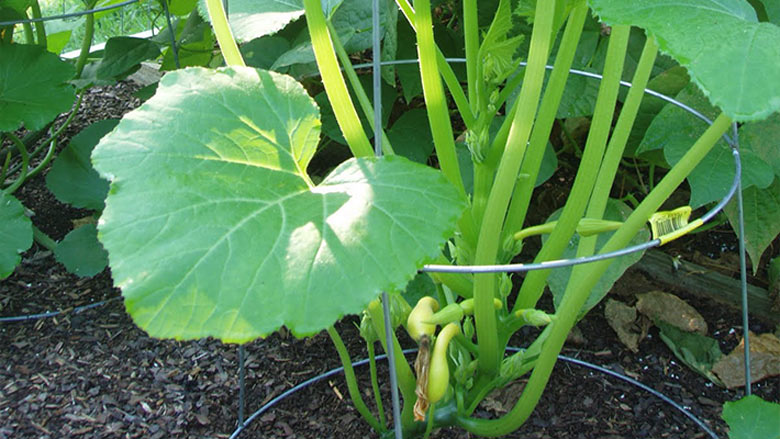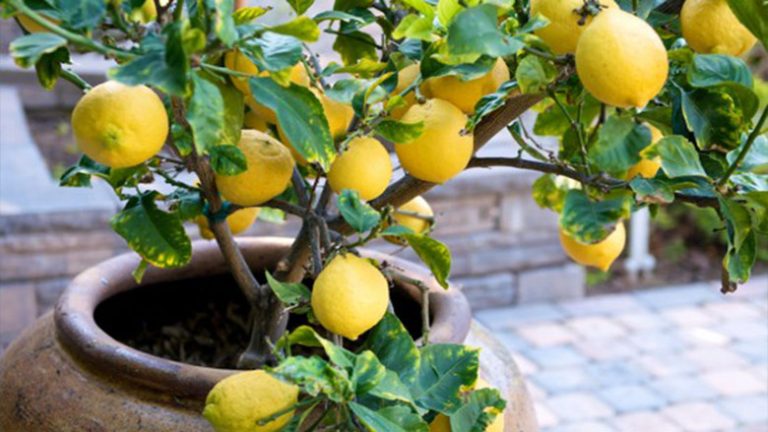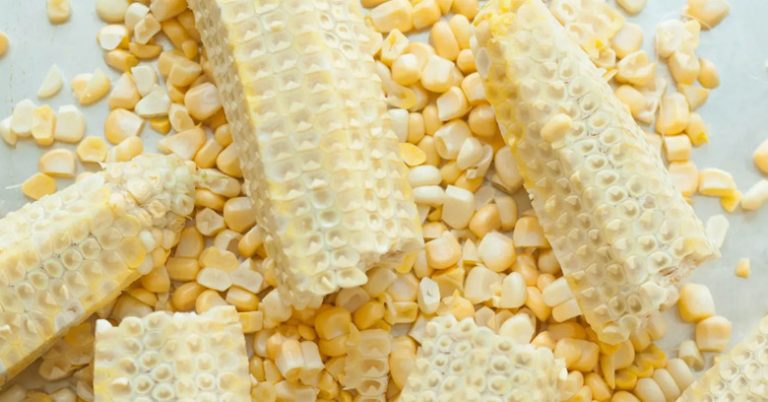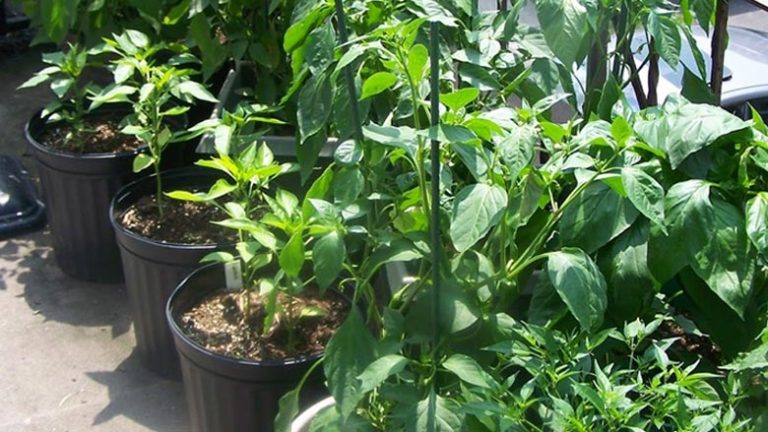Can You Use Tomato Cages for Zucchini? Step-by-Step Guide
Yes, tomato cages can be used for zucchini. Tomato cages provide support and structure for zucchini plants as they grow.
When gardening, it is essential to provide proper support for vegetable plants to ensure healthy growth. Tomato cages work well for zucchini because they provide stability and help to keep the plants upright. With their sturdy design, tomato cages prevent the zucchini plants from collapsing under the weight of their fruit.
Additionally, tomato cages allow for air circulation and sunlight exposure, promoting optimal plant health. By using tomato cages for zucchini, gardeners can maximize their crop yield and create an organized and efficient garden space.

Why Tomato Cages Are A Great Option For Supporting Zucchini Plants
Zucchini plants are known for their rapid growth and heavy fruiting, which often leads to sprawling vines and bent stems. To ensure proper growth and maximize yields, providing adequate support becomes crucial. While there are various options available, tomato cages have emerged as a great choice for supporting zucchini plants.
Here’s why:
How Tomato Cages Provide Sturdy And Vertical Support
Vertical support:
Tomato cages offer excellent vertical support for zucchini plants, allowing them to grow upright rather than sprawling on the ground. This helps optimize space in your garden and prevents the plants from competing with other crops.
Sturdiness:
The sturdy construction of tomato cages provides reliable support for heavy zucchini stems and fruit. They can withstand the weight and prevent bending or breaking, ensuring the plants remain upright throughout the growing season.
Easy installation:
Tomato cages are simple to install. Just push the cage into the ground near the zucchini plant, making sure it is secure. This process saves you time and effort compared to more complex trellising systems.
Convenience Of Using Tomato Cages For Zucchini Plants
- Versatility: Tomato cages are designed to fit a variety of plant sizes, making them suitable for growing zucchini plants of different heights and widths. They provide flexibility and adaptability as your plants grow.
- Increased air circulation: The open design of tomato cages allows for improved airflow around the zucchini plants. This reduces the risk of fungal diseases caused by damp conditions and promotes better pollination.
- Easy harvesting: The framework of tomato cages makes it easier to locate and pick zucchini fruit. The upright position of the plants prevents the fruits from hiding among the foliage, ensuring a hassle-free harvest.
- Space efficiency: Tomato cages take up minimal space in your garden compared to sprawling zucchini vines. This is particularly beneficial for those with limited gardening areas or balcony gardens.
Types Of Tomato Cages Ideal For Zucchini Plants
Zucchini plants, with their spreading vines and heavy fruit, can greatly benefit from the support and structure provided by tomato cages. But not all tomato cages are created equal when it comes to supporting zucchini plants. Here are some types of tomato cages that are ideal for zucchini plants:
- Sturdy metal cages: Metal tomato cages made from materials like galvanized steel or heavy-duty wire are excellent choices for supporting zucchini plants. These cages provide the necessary strength to hold up the weight of the zucchini plant and its fruits. Look for cages with strong vertical supports and sturdy horizontal rungs to ensure stability.
- Adjustable cages: Adjustable tomato cages are a great option for zucchini plants as they allow you to adapt the cage’s height and width to accommodate the plant’s growth. As zucchini plants can grow quite tall and wide, these cages provide flexibility and can be easily adjusted as the plant expands.
- Stackable cages: Stackable tomato cages are designed to be stacked on top of each other, providing additional height and support as your zucchini plant grows. This is particularly useful if you have limited garden space or want to maximize vertical gardening. Stackable cages are usually made from durable materials like metal or plastic and can withstand the weight of zucchini plants.
Considerations When Choosing The Right Tomato Cage For Your Zucchini Plants
When selecting a tomato cage for your zucchini plants, there are a few important factors to consider. This will ensure that you choose the right cage that will adequately support your zucchini plants and promote healthy growth. Here are some considerations to keep in mind:
- Height: Zucchini plants can grow to be quite tall, with some varieties reaching up to 2-3 feet in height. Choose a tomato cage that is tall enough to support the expected height of your zucchini plants. This will prevent the plant from toppling over and provide the necessary support for the heavy fruits.
- Sturdiness: Zucchini plants can become heavy, especially when laden with fruits. Opt for a tomato cage that is strong and sturdy enough to withstand the weight of the plant without bending or collapsing. Look for cages made from robust materials like metal or heavy-duty plastic.
- Spacing: Consider the spacing between the rungs or wires of the tomato cage. Zucchini plants have large leaves and tendrils that can spread out. Ensure that the spacing between the rungs is wide enough to accommodate the foliage of the zucchini plant without causing overcrowding or restrictions.
- Material: The material of the tomato cage can impact the growth of your zucchini plant. Metal cages are durable and offer excellent support, but they may retain heat and potentially scorch the plant in hot weather. Plastic cages, on the other hand, may not be as sturdy but are lightweight and resistant to rust. Choose a material that suits your climate and gardening preferences.
Step-By-Step Guide To Using Tomato Cages For Zucchini Plants
Step-1: Preparing Your Zucchini Plants For Tomato Cages
When it comes to supporting your zucchini plants, tomato cages can be a great option. However, before you start using tomato cages, there are a few steps you need to take to prepare your zucchini plants for optimal growth and support:
- Choose healthy zucchini plants: Select plants that are free from any signs of diseases or pests. This will ensure that your plants are strong and will be able to withstand the weight of the tomato cages.
- Prune and trim: Before installing tomato cages, make sure to prune and trim your zucchini plants. Remove any dead or damaged leaves, as well as any long or unruly branches. This will help promote healthy growth and ensure that the plants fit properly within the tomato cages.
- Provide adequate spacing: Zucchini plants tend to grow quite large, so it’s important to provide enough space between each plant. This will prevent overcrowding and allow for better air circulation and sunlight exposure.
Step-2: Properly Installing Tomato Cages For Optimal Support
Now that your zucchini plants are prepared, it’s time to install the tomato cages. Here’s a step-by-step guide to ensure optimal support:
- Choose the right size: Select tomato cages that are tall enough to accommodate the height of your zucchini plants. The cages should also have wide openings to allow the plants to grow freely.
- Dig holes for stability: Use a garden trowel or shovel to dig small holes around the base of each zucchini plant. These holes should be deep enough to securely hold the tomato cages in place.
- Insert the tomato cages: Carefully place the tomato cages into the holes, ensuring that they are centered around the zucchini plants. Gently press down on the soil to secure the cages in place.
- Stabilize with stakes: If necessary, insert stakes into the ground next to the tomato cages to provide additional stability. This is especially important if you’re using taller tomato cages or if you live in an area with strong winds.
Step-3: Maintaining And Adjusting Tomato Cages As The Zucchini Plants Grow
As your zucchini plants start to grow, it’s essential to regularly maintain and adjust the tomato cages to provide ongoing support. Here are some tips for keeping your zucchini plants well-supported:
- Regularly check for stability: Periodically inspect the tomato cages to ensure that they are still securely in place. If you notice any wobbling or shifting, gently push the cages back into the ground and reinforce them with stakes if needed.
- Train the plants: As the zucchini plants grow, gently guide the branches and vines through the openings of the tomato cages. This will help keep the plants upright and prevent them from sprawling across the ground.
- Prune when necessary: If your zucchini plants become too bushy or overcrowded within the tomato cages, don’t hesitate to prune them back. Removing excessive foliage will promote better air circulation and prevent the plants from becoming tangled.
- Adjust the cages as needed: As the zucchini plants continue to grow, you may find that the tomato cages need to be raised to provide proper support. Simply lift the cages, add more soil to the holes, and secure them back into place.
Alternatives To Tomato Cages For Supporting Zucchini Plants
When it comes to supporting your zucchini plants, tomato cages may not be the only solution. There are several alternatives available that can effectively provide the support your zucchini plants need to grow and thrive. Let’s take a closer look at some of these options:
- Trellises: A trellis is a vertical structure made of stakes or poles and a network of strings or mesh. Zucchini plants can be trained to grow upward on the trellis, saving space in your garden and making it easier to harvest the fruits. It also allows better air circulation, reducing the risk of diseases.
- Stakes: Staking involves driving stakes into the ground near the zucchini plants and tying the stems to the stakes as they grow. This method offers support and helps keep the plants upright, preventing breakage under the weight of the fruits. Use sturdy materials such as bamboo or metal stakes to ensure stability.
- A-frame supports: A-frame supports consist of two stakes driven into the ground at an angle, forming a shape. Horizontal bars or mesh can be attached between the stakes, providing a sturdy framework for the zucchini plants to grow vertically. This method is ideal for smaller gardens with limited space.
- Cage-like structures: While similar to tomato cages, there are specially designed cages available for zucchini plants that provide better support. These cages have larger openings to accommodate the size of zucchini plants and their sprawling nature. They offer stability and prevent the plants from toppling over.
Pros And Cons Of Using Alternatives To Tomato Cages
Each support option has its own advantages and disadvantages. Here are the pros and cons of using alternatives to tomato cages for supporting zucchini plants:
Trellises:
- Pros: Saves space, promotes better air circulation, allows for easier harvesting, and reduces the risk of disease.
- Cons: Requires regular pruning and training of plants onto the trellis, may be less stable than other support methods.
Stakes:
- Pros: Provides individual support to each plant, prevents breakage under the weight of fruits, easy to install.
- Cons: May require more maintenance, is less stable compared to other methods, and limits plant growth if not placed correctly.
A-frame supports:
- Pros: Saves space, provides sturdy support, is easy to install, and allows for vertical growth.
- Cons: Requires regular tying and training of plants, may be less suitable for larger zucchini varieties.
Cage-like structures:
- Pros: Specifically designed for zucchini plants, provides ample support, helps prevent toppling, and allows for proper airflow.
- Cons: May take up more space, and can be costly compared to other methods.
How Other Support Methods Compare To Using Tomato Cages For Zucchini Plants
While tomato cages are a popular choice, exploring alternative support methods for your zucchini plants can have its advantages. Let’s compare these methods to using tomato cages:
- Trellises offer vertical growth, saving space and promoting better air circulation, unlike tomato cages that allow plants to sprawl.
- Stakes provide individual support, preventing breakage under the weight of fruits, whereas tomato cages may not offer as much stability.
- A-frame supports and cage-like structures offer similar benefits to trellises, allowing for vertical growth and better airflow. However, they may require more space and potentially more investment compared to tomato cages.
Tips And Tricks For Maximizing The Effectiveness Of Tomato Cages For Zucchini Plants
Zucchini plants, with their sprawling vines and abundant produce, can benefit greatly from the use of tomato cages. Not only do tomato cages provide essential support for the zucchini plant, but they also help promote better airflow, prevent disease, and make harvesting easier.
To ensure you get the most out of using tomato cages for your zucchini plants, here are some tips and tricks:
Supplementary Techniques To Optimize Tomato Cages For Zucchini Plants
- Staking for added stability: While tomato cages offer a good amount of support, taller zucchini varieties may require additional stability. Consider staking the tomato cages with bamboo stakes or metal rods driven firmly into the ground, securing the cages in place.
- Mulching for moisture retention: Apply a layer of organic mulch around the base of the zucchini plants and inside the tomato cages. This will help retain moisture, prevent weed growth, and maintain a more consistent soil temperature, ensuring optimal growing conditions for your zucchinis.
Pruning And Training Zucchini Plants On Tomato Cages
- Early pruning for better airflow: At the early stages of growth, prune the lower leaves of the zucchini plant to improve airflow through the tomato cage. This helps prevent the development of fungal diseases that thrive in humid conditions and allows the plants to focus their energy on fruit production rather than leaf growth.
- Training the vines: As the zucchini plants grow, gently train the main vine to weave in and out of the tomato cage openings. This helps distribute the weight of the plant and its fruits, preventing the vines from becoming overly heavy and collapsing under their own weight.
How To Prevent Common Issues When Using Tomato Cages For Zucchini Plants
- Regular monitoring and adjusting: Check your tomato cages frequently to ensure they are providing adequate support. As the zucchini plant grows, adjust the vines and branches to prevent overcrowding and tangling within the cage.
- Harvesting promptly: Harvest the zucchinis promptly when they reach the desired size. Leaving overripe or oversized zucchinis on the plants can strain the tomato cages and potentially cause them to collapse or break.
- Inspecting for pests and diseases: Regularly inspect the zucchini plants for any signs of pests or diseases. Removing infected or infested leaves and fruits promptly can prevent the spread of pests or diseases to neighboring plants and preserve the overall health of the zucchini plant.
Frequently Asked Questions About Using Tomato Cages For Zucchini Plants
Using tomato cages for zucchini plants may seem like a convenient option, but it’s natural to have a few concerns and queries. In this section, we will address the common questions that frequently arise when it comes to using tomato cages for your zucchini plants.
Let’s dive in and find out if tomato cages can be reused for zucchini plants in subsequent years and how to store them during the off-season!
Can Tomato Cages Be Reused For Zucchini Plants In Subsequent Years?
Using tomato cages for zucchini plants in subsequent years can be a cost-effective solution, but there are a few points to consider before deciding to reuse them. Here’s what you need to know:
Quality check: Before reusing tomato cages, inspect them for any signs of damage or weakness. Ensure they are sturdy enough to support your zucchini plants without collapsing or bending.
Size matters: Tomato cages are typically designed for compact tomato plants. However, zucchini plants tend to grow larger and more sprawling. Determine if the size and height of the tomato cages are suitable for your zucchini plants, or if they may need additional support.
Spacing requirements: Zucchini plants require adequate spacing for air circulation and to prevent overcrowding. Ensure that the tomato cages allow ample space for the zucchini plant to grow both vertically and horizontally.
Adjustments and modifications: Depending on the growth patterns of your zucchini plants, you may need to make adjustments to the tomato cages. This could include widening the openings, adding extra support stakes, or using additional ties to secure the plants.
Sanitization: It’s crucial to sanitize tomato cages before reusing them to prevent any potential disease transmission from previous plantings. Clean the cages thoroughly using a mild detergent or vinegar solution, rinse them, and allow them to dry completely before use.
How To Store Tomato Cages During The Off-Season?
When the growing season for zucchini plants comes to an end, it’s essential to store your tomato cages properly to ensure they remain in good condition and are ready for use next year. Here are some tips on how to store tomato cages during the off-season:
- Cleaning and dismantling: Before storing tomato cages, give them a thorough cleaning to remove any dirt, debris, or remnants of the previous growing season. Disassemble the cages, separating the vertical stakes from the circular rings, to make them easier to store.
- Compact storage: Stack the circular rings of the tomato cages by nesting them inside one another to minimize the space they occupy. Secure the stakes together, tying them with a string or using zip ties to keep them compact.
- Protective covering: To prevent any rust or damage during storage, consider wrapping the tomato cages in a protective covering such as a tarp, plastic sheet, or individual covers for each set of stakes. This will help maintain their quality for later use.
- Dry storage area: Find a cool and dry storage area, such as a shed, garage, or basement, where the tomato cages can be stored safely. Ensure they are kept away from moisture, direct sunlight, or extreme temperature fluctuations that could cause damage.
- Labeling for easy identification: To simplify setup in the next growing season, label or tag each set of tomato cages, indicating their size or any modifications made, if applicable. This will save you time and effort when you need to retrieve and set them up.
Frequently Asked Questions On Can You Use Tomato Cages For Zucchini
Can Tomato Cages Be Used For Zucchini Plants?
Yes, tomato cages can be used for zucchini plants. Zucchini plants have a similar growth habit to tomatoes, and the cages provide support for their sprawling vines. Make sure to choose cages that are tall enough to accommodate the zucchini plant’s height and sturdy enough to support the weight of the fruit.
Are tomato cages suitable for all zucchini varieties?
Yes, tomato cages can be used for most zucchini varieties, including bush and vining types. However, for vining varieties, it’s essential to choose larger and taller cages to accommodate their growth.
Can I make my own tomato cages for zucchini?
Yes, you can make your own tomato cages for zucchini using materials like wire mesh, stakes, or even sturdy branches. Simply create a cylinder shape with the material and ensure it is tall and wide enough to accommodate the zucchini plant’s growth.
When should I install the tomato cages for my zucchini plants?
It is best to install tomato cages for your zucchini plants shortly after transplanting them into the garden or container. This will help avoid disturbing the roots later and ensure the plants grow upright from the beginning.
Can I reuse tomato cages for zucchini in the following growing seasons?
Absolutely! Tomato cages are durable and can be easily reused for multiple growing seasons. Just make sure to clean them after each season to remove any debris or pathogens that might have accumulated.
Conclusion
To summarize, tomato cages can be an excellent option for supporting zucchini plants in your garden. They provide stability and help to keep the plants upright as they grow, preventing them from sprawling across the ground. By securing the branches and leaves to the cage, you can ensure proper air circulation and sunlight exposure, leading to healthier and more productive zucchini plants.
Additionally, using tomato cages can help to conserve space in your garden, making it easier to manage multiple plants in limited areas. Remember to select sturdy and well-made cages that can withstand the weight of the growing zucchini. With proper care and attention, your zucchini plants will thrive with the support of tomato cages, giving you an abundant and delicious harvest all season long.
So, don’t hesitate to give them a try and see amazing results in your garden.
![Why Is My Corn Turning Yellow [Causes, Solutions, and Prevention]](https://gardensuggest.com/wp-content/uploads/2023/09/Why-Is-My-Corn-Turning-Yellow-768x432.webp)




![Can I Weed Whack Wet Grass [Explained]](https://gardensuggest.com/wp-content/uploads/2023/07/Can-I-Weed-Whack-Wet-Grass-1-768x432.jpg)